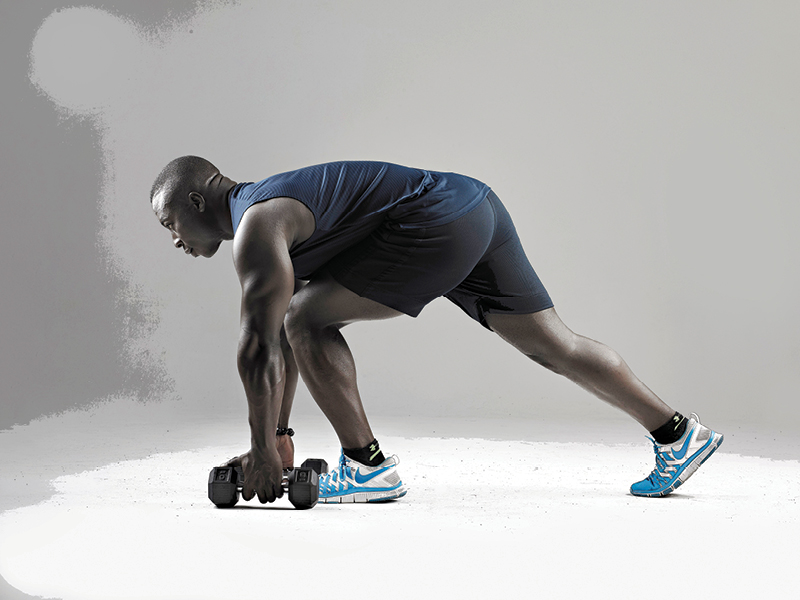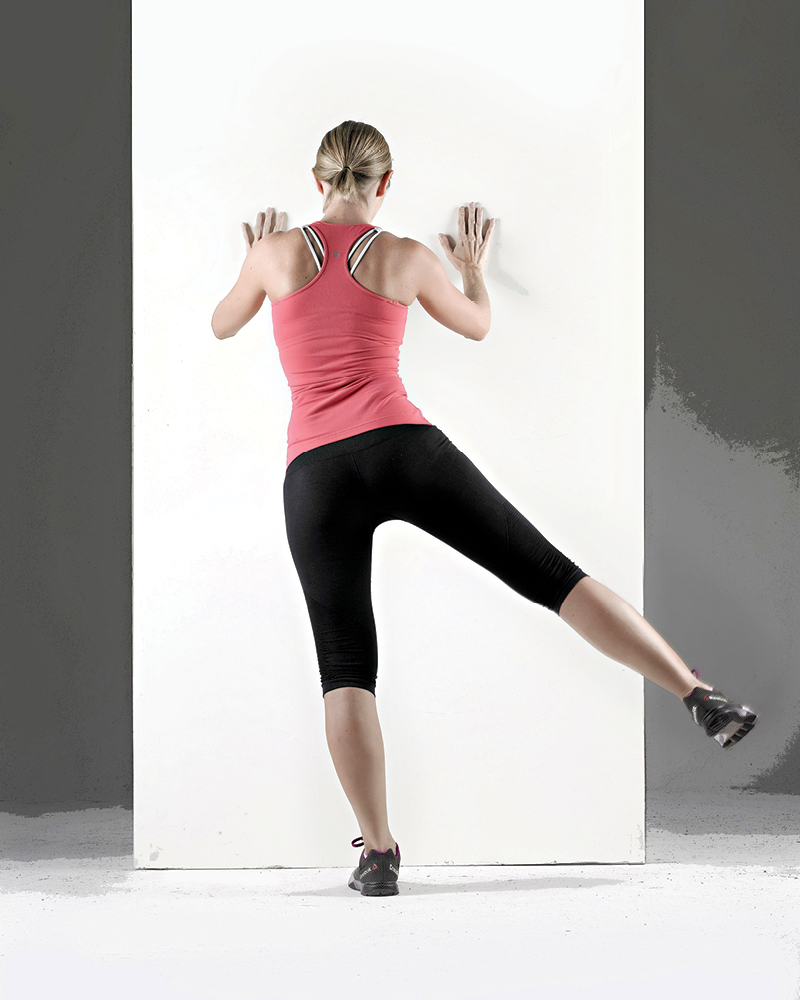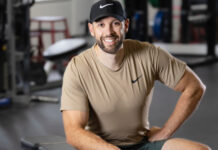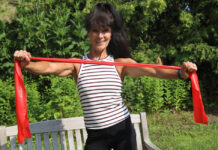Fitness should be based on the lifestyle that you lead; complementing your life rather than complicating it. To receive the benefits of exercise, your fitness routine needs to be suitable to your body type and fitness goals, while still being simple, effective and practical. A full-body workout is a great option for any fitness level and all fitness journeys.
A full-body workout should:
- Respect your body and tune in to your natural movements;
- Include both micro and macro muscle movements;
- Promote stability, strength, tone, balance, endurance and flexibility;
- Avoid compression to the body, as compression restricts blood flow.
Warm-up
Do 12-15 reps of each warm-up exercise, then repeat for the opposite side.
A. Leg Swings
Hold bar or wall for stability. From the hip, swing the left leg forward, backward, then across the body and back.

B. Leg Crossovers
Lay face up on the floor, arms out and at a 45-degree angle away from the body, palms facing up to prevent shoulders from rolling forward. Lift the left leg, bent at the knee. Rotate the left knee across the body to touch the floor near your right hip. Keep shoulders planted on the floor to promote balance in the upper body and create a deeper stretch in the low back.

C. Wall Helicopters
With right shoulder and hip against the wall, step forward with the left leg, approximately 1 to 1.5 feet in front of your right foot. With palms together, press the right arm against the wall, then swing the left arm out in a 180-degree arc towards the wall behind you, then back to the opposite palm.
The Workout

1. The Fours
- (Abdominal & core)
This exercise takes the place of sit-ups or crunches as it places no strain on your neck. Lay down on the floor or a bench. Cross your left leg over your right leg. With palms facing up while on the floor, bring up the right leg with a slight bend at the knee, then ease back down making sure the foot returns to the floor. Focus on your core and feel the activation through the hips and hip flexors. Breathe in when bringing up the legs and breathe out when you are back on the ground.
Reps: 15-18, all fitness levels.

2. Dumbbell Lunge
- (Legs or lower body)
Pick a set of weights based on your fitness. Stand with both feet together to make sure they are aligned and curl your arms up while holding the weights. This allows you to have full control so you are not wobbling around during the exercise. Bend from the waist while moving one leg forward into your lunge. This method helps promote better recruitment of the gluteals, hamstrings and quadriceps. And it protects your joints.
Reps: 12-15, weight varies for fitness level
Beginner: 8-10 lbs.
Intermediate: 12-15 lbs.
Advanced: 15-30 lbs.

3. 3-Point Push-up
- (Chest, arms, core, upper back & buttocks)
This push-up targets five parts of the body in one unique movement. It helps increase endurance, protects the joints because it doesn’t have any up and down movement like the conventional push-up. It forces the pectorals open because the hands and elbows are in the same position from no unnecessary movement.
Get on all fours then fully extend left leg. Keep both elbows in line with the shoulders, not flared out. Bend elbows while lowering your upper body half way down, bringing the extended leg up and down with the foot flexed and toes pointed as you complete your push-up. Finish a set with the left leg, then switch to the right leg. This creates balance in the body. Beginners can do these push-ups on one knee. Advanced should do the push-ups on one foot.
Reps: Vary depending on fitness level
Beginner: 10-12 reps x 2 sets
Intermediate: 12-15 reps x 2 sets
Advanced: 15-20 reps x 2-3 sets

















